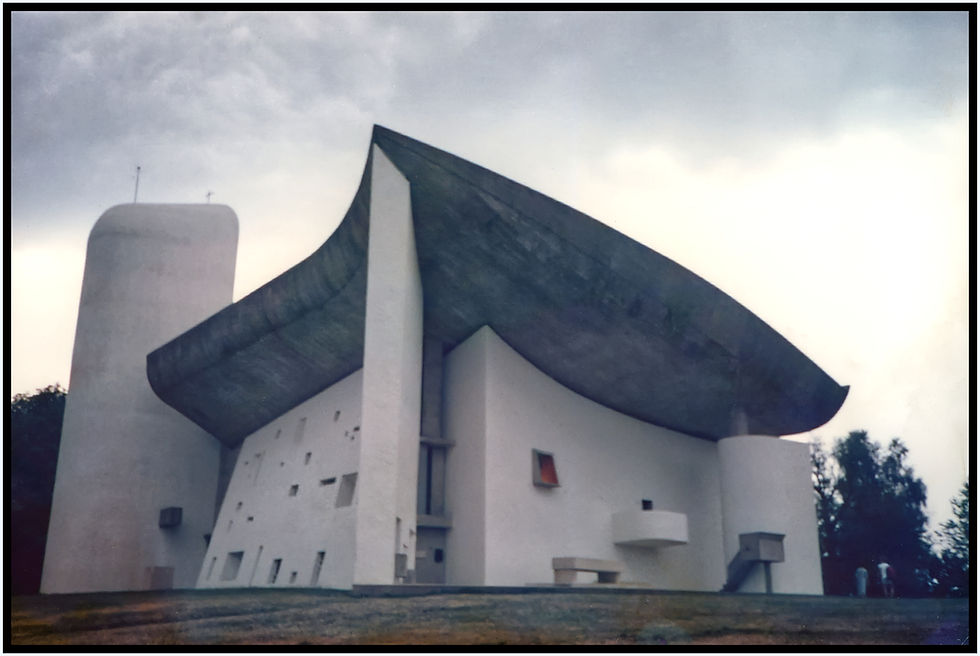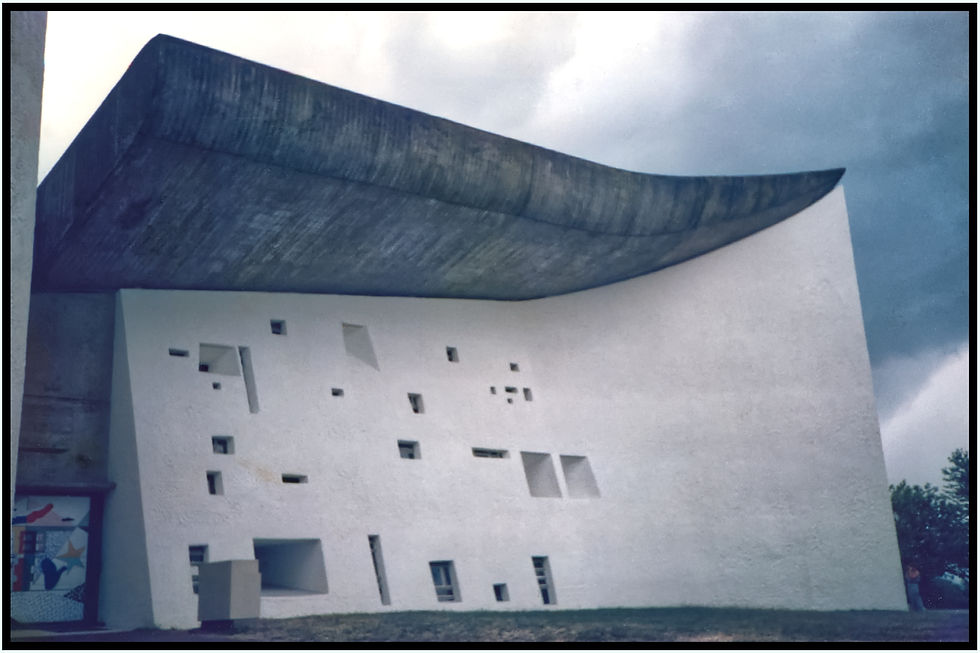Originally published on Photoblog by Gethin Thomas DECEMBER. 20, 2020
This winter I shall be doing a series of vintage photo posts because I am in the process of scanning all my old photos into digital. The prints are not of any great technical quality, but I will clean up the worst of the ravages of time without altering their overall faded charm.
These are from 1986 on a trip across Europe when we drove to Switzerland from the UK, when that involved having to go on water rather than under it, taking a different route there and back to take in as many interesting sights as possible. I have always had an interest in architecture and this chapel by Le Corbusier had always fascinated me for years, so the opportunity to engineer our route back through Ronchamp was a great one I couldn't miss. I relate our personal very memorable experience at the chapel, at the end of the post. It's amazing to me now looking at the dates to think that the chapel was only 31 years old when these were taken.
Notre-Dame du Haut ( Our Lady of the Heights) is a Roman Catholic chapel in Ronchamp, France. Built in 1955, it is one of the finest examples of the architecture of Franco-Swiss architect Le Corbusier. The chapel is a working religious building. Notre-Dame du Haut is commonly thought of as a more extreme design of Le Corbusier’s late style.

The chapel is a simple design with two entrances, a main altar, and three chapels beneath towers. Although the building is small, it is powerful and complex. The chapel is the latest of chapels at the site. The previous chapel was completely destroyed during World War II. The previous building was a 4th-century Christian chapel. At the time the new building was being constructed, Le Corbusier was not interested in Machine Age architecture; he felt that his style was more primitive and sculptural. The new chapel was built for a reformist Church looking to continue its relevance. Warning against decadence, reformers within the Church at the time looked to renew its spirit by embracing modern art and architecture as representative concepts.

The structure is made mostly of concrete and is comparatively small, enclosed by thick walls, with the upturned roof supported on columns embedded within the walls, like a sail billowing in the windy currents on the hill top. The structure is built mostly of concrete and stone, which was a remnant of the original chapel built on the hilltop site destroyed during World War II. Some have described Ronchamp as the first Post-Modern building, and others as the first building of the movement of Expressionist architecture after World War II.



Standing by the exterior altar below, we took shelter under the overhanging roof from a mighty thunderstorm which broke just as we exited the chapel. All the other visitors fled for cover inside the church. We watched the storm break around us and across the green lawn in the foreground. The rain was so heavy that it formed a watery surface in the dry grass within a few seconds and then as the water gathered, the rain drops started splashing and bouncing back up like a field of miniature fountains.
Before our eyes a small mouse appeared and ran and jumped and hopped it's way right across the lawn splashing through what it would have considered to be a serious flood. As it bounced it's way into the undergrowth at the edge, a pillar of steam caught in a spiral of wind like a ghostly apparition of a person, swept slowly across the lawn retracing the path of the bouncing mouse.
We watched transfixed, as it slowly moved about forty or fifty feet in front of us before fading away. Had we been superstitious or in that way inclined I think we would have seen it as some sort of Holy message or sign, rather than a natural phenomenon. Almost as quickly the storm abated and the rain eased to nothing. It still remained dark and humid as we walked back down the hill to continue our journey.

Kommentare